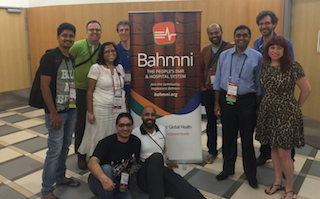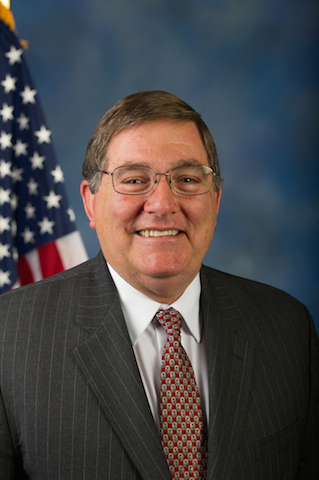Is The 1.5+ Trillion Dollar HITECH Act a Failure?
Hopefully, the public statements made by President Obama and Vice President Biden will lead to a public debate over the monumental problems that the HITECH Act and proprietary EHR vendors have caused the American people. While the press continues to report the figure of $35 billion as the cost of implementing EHRs, that figure does not tell the entire story. Perhaps the next step is to provide accountability and transparency. That would start with firm numbers regarding the real costs of EHR implementations forced on an unprepared healthcare system by the HITECH Act.
So what are the real figures? For starters, the $35 billion the press constantly refers to is only the amount of money paid out as taxpayer-funded subsidies to “encourage” hospitals and other medical facilities to implement EHRs. Looking at the HITECH Act as a “carrot and stick” approach to health IT, what the press is reporting on is basically just the cost of the carrots. It’s a lot of money, but only a small fraction of the actual amount of money medical facilities have been forced to spend on EHRs. While the costs of EHR implementations are closely guarded secrets in most cases, there is enough data to that has leaked out that indicates that medium-sized hospitals have spent hundreds of millions of dollars in their EHR implementations each, while an increasing number of large hospitals have already spent over a billion dollars each in their EHR implementations and some hospital systems are in the $10 to $20 billion range. And the majority of these hospitals are on their second EHR implementation, and some on their third.
With over 6,000 hospitals in the US, each one having been forced to spend millions to billions of dollars on their EHRs, how could it be that they only spent $35 billion collectively? The actual evidence based on press reports, industry studies, and data analysis is that collectively medical facilities in the US have spent well over $1.5 trillion dollars in their EHR implementations since the passage of the HITECH Act.
That is money that ultimately comes out of the pockets of the American people in the form of higher medical costs and increased insurance premiums. And that is only the initial cost of implementation. The costs of ongoing support, maintenance, and licensing run into the hundreds of billions of dollars a year. All adding to the cost of “healthcare.” The enormous outlay might be justified if the proprietary EHRs led to savings in the costs of operations, but the exact opposite has been recorded: they slow down doctors, introduce their own forms of medical errors, and lead to frustration and even doctors quitting the field.
 Edmund Billings, MDThe HITECH Act, Proprietary EHR Vendors, and the Ongoing Collapse of America’s Medical Infrastructure
Edmund Billings, MDThe HITECH Act, Proprietary EHR Vendors, and the Ongoing Collapse of America’s Medical Infrastructure
Now that Obama and Biden have publicly raised the issue of the role of proprietary EHR vendors in blocking health data interoperability, they will hopefully raise the next set of issues that include not just the exorbitant cost of EHR implementations, as well as the impacts to the medical system through the closure of hospitals and other medical facilities, the layoffs of medical personnel to compensate for those costs, and the dramatic increase in deaths from medical errors caused by poorly designed EHRs (discussed by Thanh Tran in this Open Health News article).
So far, more than 1,000 hospitals and tens of thousands of clinics and physician offices have been forced into closure or “consolidation” as a result of the enormous financial burdens of EHR implementations imposed by the HITECH Act. “Consolidation” is a euphemism for a takeover of the hospitals in this country by major hospital chains (that many people refer to as monopolies). As Dave Chase discusses in this article, an annotated transcript of a TeDx talk he recently gave (with tons of references), the direct consequences of “hospital consolidation” are the layoff of large numbers of medical staff and price rises of 50% to 100%. Thus, the HITECH Act has become a major factor in the collapse of the physical infrastructure needed to provide medical care to the American people, as well as the astronomical rise in the cost of “healthcare.”
This is a topic that we have covered extensively in Open Health News such as this article by Edmund Billings, MD (read the article and the comments section). The specific case studied in the article, that of Maine Medical Center in Portland, was also examined by Bernie Monegain in this article in Healthcare IT News. The lesson was clear, but the executives of hospitals across the US have been ignoring it.
The latest victim of the HITECH Act, and one that is getting lots of press coverage is that of the University of Texas MD Anderson Cancer Center in Houston. MD Anderson center is laying off roughly 1,000 employees as the result of “financial woes” that “started when it rolled out a new electronic health records system in March,” as reported in the Houston Business Journal. According to the Journal, MD Anderson ended its 2016 fiscal year with a $267 million operating loss. MD Anderson is implementing the same EHR that Maine Center implemented - Epic Systems.
The terms of MD Anderson’s deal with Epic Systems and the cost of the EHR implementation have been kept secret - a ubiquitous aspect of proprietary EHR vendors, who commonly refuse to let their customers talk about even the most basic traits of the systems they deal with daily. The Houston Business Journal, however, compared the cost of the MD Anderson EHR implementation to that of the Mayo Clinic, which will exceed one billion dollars. To add insult to injury, in addition to the layoff announcements, the Houston Chronicle also reported that Dr. Ron DePinho, president of MD Anderson and the champion of their Epic Systems implementation, is going to receive the “largest performance bonus” among University of Texas presidents.
This is a good segway for a short discussion of the other major element of the healthcare system that is posing major obstacles to health IT interoperability. That would be hospitals and hospital administrators that are actively blocking health data exchange so they can “lock in” their patients to their hospitals. In fact, many argue that the Office of the National Coordinator (ONC), health care system administrators, providers, and customers of EHRs are far more to blame because they're willing to pay for bad deals rather than vendors who are creating the bad deals.
 Dave ChaseAnd this is certainly a huge issue that needs to be examined. Dave Chase has an extensive discussion of corruption in the healthcare system in an article titled “Hospital CEO Behavior & the Devastating Consequences on the Middle Class.” Chase is not the only one that has been openly talking about the widespread corruption in the healthcare system. Roy Poses, MD and Scot Silverstein, MD, have written dozens of articles in Health Care Renewal about healthcare corruption and the role of corrupt hospital administrators in the purchase of expensive proprietary EHRs.
Dave ChaseAnd this is certainly a huge issue that needs to be examined. Dave Chase has an extensive discussion of corruption in the healthcare system in an article titled “Hospital CEO Behavior & the Devastating Consequences on the Middle Class.” Chase is not the only one that has been openly talking about the widespread corruption in the healthcare system. Roy Poses, MD and Scot Silverstein, MD, have written dozens of articles in Health Care Renewal about healthcare corruption and the role of corrupt hospital administrators in the purchase of expensive proprietary EHRs.
The situation is so bad that Pope Francis made a public statement shortly before Christmas to warn that corruption is a cancer to the healthcare industry. Catholic News Service reports:”
Corrupt business practices that seek to profit from the sick and the dying are a cancer to hospitals entrusted with the care of the most vulnerable, especially children, Pope Francis said. Doctors, nurses and those who work in the field of health care must be defined by their ability to help their patients and be on guard against falling down the slippery slope of corruption that begins with special favors, tips and bribes, the pope told staff and patients of Rome's 'Bambino Gesu' children's hospital Dec. 15. "The worst cancer in a hospital like this is corruption," he said. "In this world where there is so much business involved in health care, so many people are tricked by the sickness industry, 'Bambino Gesu' hospital must learn to say no. Yes, we all are sinners. Corrupt, never."
This is a topic that clearly needs to be addressed. In the meantime in this post we continue to focus on what President Obama and Vice President Biden had to say.
To Implement an EHR, or Not. Is that the Question?
Given all the evidence of the impact of proprietary EHRs on the healthcare system, does it mean that EHRs are bad? While the evidence from counterproductive EHRs in American's private sector medical system could be, and is being used to make that very argument, there is clear evidence that EHRs can help improve clinical outcomes. There is ample evidence that EHRs, combined with the right approach to medical treatment, can have a huge positive impact on the quality of care are reduce the costs of that care.
There is a fundamental issue here that has been best defined by Scot M. Silverstein, M.D., who teaches Medical Informatics Drexel University. Silverstein defines it as Good Health IT vs. Bad Health IT.
Here are the definitions that Dr. Silverstein has arrived at:
Good Health IT ("GHIT") is defined as IT that provides a good user experience, enhances cognitive function, puts essential information as effortlessly as possible into the physician’s hands, can be easily, substantively and cost-effectively customized to the needs of medical specialists and subspecialists, keeps eHealth information secure, protects patient privacy and facilitates better practice of medicine and better outcomes.
Bad Health IT ("BHIT") is defined as IT that is ill-suited to purpose, hard to use, unreliable, loses data or provides incorrect data, is difficult and/or prohibitively expensive to customize to the needs of different medical specialists and subspecialists, causes cognitive overload, slows rather than facilitates users, lacks appropriate alerts, creates the need for hypervigilance (i.e., towards avoiding IT-related mishaps) that increases stress, is lacking in security, compromises patient privacy or otherwise demonstrates suboptimal design and/or implementation.
 Scot M. Silverstein, MD
Scot M. Silverstein, MD
Dr. Silverstein is widely recognized as one of the world's leading experts on medical informatics. The definitions above were arrived at following an extensive discussion and debate among medical informaticists around the world. The discussion was prompted by the combination of an article in 2009 by Dr. Silverstein titled A Primer On Why We Have Busywork Generators Masquerading as EMRs and an 8-part article series detailing what Dr. Silverstein called "Mission hostile user experiences presented by major vendor "CCHIT Certified" EHR's."
With those concepts in mind, we can tell the story of well-known journalist Phillip Longman who accidentally discovered one of the greatest examples of Good Health IT as he was doing research on a feature article for Fortune magazine on "the best healthcare system in the US." Longman discovered that the answer was the VA medical system. His discovery is documented in his famous book “Best Care Anywhere: Why VA Health Care Would Work Better For Everyone,” as well as in multiple articles in Washington Monthly and many other publications that he authored.
Longman presents clear evidence that the VA's open source VistA EHR (an example of Good Health IT) was a key factor in the 1990's turnaround that led to the VA medical system to become the best healthcare system in the US according to all measures of quality of care. Despite troubles in some of VA’s 1,800 medical facilities, such as Phoenix, and some systemic problems that need to be fixed, the data shows that the VA medical system, to this day, holds the #1 position in terms of quality of care compared to private sector healthcare systems.
It was this evidence that led to the movement to expand the use of electronic health records from the Veterans Health Administration's (VHA) medical system, the pioneer in the development and use of EHRs, to private hospitals across the US. And for those that are tired of the endless media smear campaign against the VA, notice that those press articles never, ever, compare VA's quality of care data side by side with private sector data. If they did, the smear campaign would fall apart. When reading one of the usual corporate media articles about "how bad" the VA is, the question to ask is "compared to what?"
The evidence presented by Phillip Longman in his articles and book was one of the major factors that led Rep. Pete Stark (D-CA) to introduce H.R. 6898 in September 2008. The bill called for the establishment of a federal open source Health IT system that could be leveraged by the private sector as open source software. H.R. 6898 was a well written, well thought-out bill that promoted the adoption of EHRs by providing an open source platform as well as a national coordinator office to assist private sector medical facilities in the adoption of EHRs.
H.R. 6898 did not force anyone to adopt open source EHRs. That was optional. What was not optional was how the money from taxpayers could be spent. The bill established that if any money spent by the federal government (that is to say money from American taxpayers), then that money had to be spent on open source solutions. That way, the money spent on EHRs and other health IT solutions would benefit all Americans.
The bill had wide bipartisan support and it was expected to pass.
 Phillip Longman
Phillip Longman
At that point, the proprietary EHR vendors launched a massive mobilization to defeat the Stark bill. Armies of lobbyists and EHR vendors spread through the halls of Congress by the hundreds to argue against an open source health IT strategy. And the Stark bill was defeated.
Some Congressional aides estimate that the proprietary EHR vendors may have spent as much as $100 million to lobby against the bill. And what did the American people get at the end? Instead of the Stark bill, we ended up with the EHR vendor-sponsored HITECH Act. In sharp contrast to the Stark bill, the HITECH Act is a coercive piece of legislation that forced medical facilities across the US to spend well over $1.5 trillion on EHRs, so far, and created a costly administrative nightmare under the rubric of "Meaningful Use."
Back to the complaints that President Obama and Vice President Biden raised against proprietary EHR vendors. Is there a way to fix this EHR mess? Yes, certainly. But begging EHR vendors to play nice and writing one piece of legislation after another to fix the problems that the HITECH act has caused, is not the solution.
Would a “Stark Bill 2” Save the Day?
We need to go back to the Stark bill and the open source approach it laid out. This argument has been clearly articulated by Dr. Bruce Wilder in a series of articles including The Politics of the EHR and The EHR Debacle. As Dr. Wilder points out, "a solution has been in plain sight for years." He continues, " On September 15, 2008, Congressman Pete Stark (D-CA) introduced H.R. 6898 in the 110th Congress, and called for the establishment of a federal open source Health IT system." Sec 3001(c)(4) of that proposed Act reads as follows:
(4) FEDERAL OPEN SOURCE HEALTH IT SYSTEM-
(A) IN GENERAL- The National Coordinator shall provide for coordinating the development, routine updating, and provision of an open source health information technology system that is either new or based on an open source health information technology system, such as VistA, that is in existence as of the date of the enactment of this title and that is in compliance with all applicable standards (for each category described in paragraph (2)(A)) that are adopted under this subtitle. The National Coordinator shall make such system publicly available for use, after appropriate pilot testing, as soon as practicable but not later than 9 months after the date of the adoption by the Secretary of the initial set of standards and guidelines under section 3003(c).
(B) CONSORTIUM- In order to carry out subparagraph (A), the National Coordinator shall establish, not later than 6 months after the date of the enactment of this section, a consortium comprised of individuals with technical, clinical, and legal expertise [in] open source health information technology. The Secretary, through agencies with the Department, shall provide assistance to the consortium in conducting its activities under this paragraph.
(C) AUTHORIZATION TO CHARGE NOMINAL FEE- The National Coordinator may impose a nominal fee for the adoption by a health care provider of the health information technology system developed or approved under subparagraph (A). Such fee shall take into account the circumstances of smaller providers and providers located in rural or other medically underserved areas.
(D) OPEN SOURCE DEFINED- In this paragraph, the term `open source' has the meaning given such term by the Open Source Initiative.[www.opensource.org]7
These are really important articles to read to understand the difference between the Stark bill approach and the HITECH Act approach. Dr. Wilder is particularly qualified for the discussion. He is a practicing brain surgeon in Pittsburgh who has strong interests in patient safety and EHR design. Dr. Wilder is also a practicing lawyer focused on health law and has been admitted to practice before the US Supreme Court. In addition, he is active advising and supporting the tech community in Pittsburg. His personal background and experience have given him the ability to write with great clarity and precision about the superiority of the open source approach to health IT as he discusses in his articles.
One of the major questions to be answered as we face the staggering cost of the HITECH Act and the constant hemorrhage of hundreds of billions of dollars annually to pay for ongoing support, maintenance, and licensing of proprietary EHRs is: Would the Stark bill have done a better job? Looking back at the past decade, the answer is yes, and on multiple levels.
 Rep. Pete Stark (D-CA)
Rep. Pete Stark (D-CA)
There are several approaches that can be taken. Repealing the HITECH Act and replacing it with “Stark Bill 2” is clearly an option. Could Stark Bill 2 fix the mess created by the HITECH Act? Well, the proof already exists.
Some examples:
As foreseen by Rep. Stark, VA’s VistA has been widely implemented in the US and around the world. VistA is now running in more than 1,000 private and public sector medical facilities across the world outside of the VA. It is running in everything from clinics, to hospitals such as Oroville Hospital in Northern California, to entire countries, such as Jordan, where the Kingdom has implemented VistA at more than half of the medical facilities and is currently implementing it in the rest of the Kingdom. Leading commercial VistA provider, DSS, Inc., is currently implementing VistA at hundreds of community health centers and mental health facilities, as well as dozens of hospitals, in the States of Tennessee and New York.
Across the board, the results of the VistA implementations have been an extraordinary success - an EHR that is interoperable, capable, inexpensive, extensible, and loved by the users. And one that is being fully modernized by its open source community.
That said VistA is not the only option for an open source EHR. As readers of Open Health News are aware, we have been reporting on the more than 4,000 open source health IT apps in the market that are as good, or better, than their expensive and proprietary alternatives. Many of those are listed in our Resource section. The fact that an entire ecosystem of open health solutions would emerge was also foreseen by Rep. Stark.
The kind of open source EHR organization that Rep. Pete Stark envisioned in his bill already came into existence. It is called the Open Source Electronic Health Record Alliance (OSEHRA). Created five years ago as a non-profit organization that would serve as a conduit between the VA and the open source community around VistA, the organization has sponsored multiple conferences, as well as multiple projects, and is serving as a central development hub for all the major improvements to VistA and its modernization efforts that are taking place in the private sector. In addition, OSEHRA is expanding from its original mission to support VistA, to support many other open source projects such as PopHealth. It has invited multiple other open source projects such as OpenEMR, OpenClinica, and OpenEHR to present at the OSEHRA conferences and it is looking for ways to help many other open health projects.
In addition, the Centers for Medicare & Medicaid Services (CMS) has embraced an open source strategy to modernize the aging Medicaid IT platforms, as detailed in this article. This is such an important endeavor that Andrew Slavitt, Acting Administrator of CMS, has openly discussed the opportunity for innovative companies to participate in this modernization in multiple blog posts and meetings. CMS has allocated more than $5 billion a year for this modernization effort. They are seeking modular solutions, where each module can be open source, a cloud-based service, or a modular and reusable COTS solution. They are to be plugged into an open source framework that allows for the reusability and interchangeability of components. The opportunity is so big that Open Health News launched a newsletter specifically to cover the news related to open Medicaid IT. The regulations adopted by CMS to fund and facilitate the Medicaid IT modernization effort read just like the Stark bill.
On an international scale, open source health IT solutions are growing exponentially and are already the primary health IT solutions in dozens of countries. OpenEHR, for example, has large-scale implementations in Australia, Scandinavia, Russia, China, and South America, and many more smaller implementations including a number in the United Kingdom (UK), some of which may become large scale implementations. This article by Ewan Davis provides a really good overview of OpenEHR.
Another major project is OpenMRS which been deployed at thousands of locations in more than 40 countries. It has more than 10,000 contributors around the world who are taking ownership of the software, creating local versions in their native languages that address the very specific needs of their communities (try doing that with a proprietary EHR), while generating innovative improvements and apps that they are contributing back to the community.
The use of OpenMRS has had such a positive impact to the health and well being of the citizens of the nations where it has been implemented, that 12 countries are currently implementing the open source EHR on a national scale. In addition, major health systems in more than 20 countries, many with hundreds of hospitals in their network, are also implementing or looking to implement OpenMRS. Interestingly enough, its rapid growth has caused a crisis in the community as OpenMRS as a national health system has required substantial improvements and changes to the software. At the same time, an ecosystem of support companies and organizations that sign contracts and provide 7/24 support on a national scale has had to be developed and nurtured.
 The ThoughtWorks Team at OpenMRS 2015
The ThoughtWorks Team at OpenMRS 2015
The OpenMRS project has many lessons to teach the health IT industry in the US. Collaboration is one of those key lessons. And the level of collaboration goes far beyond what we already mentioned. One key example is given by the actions of ThoughtWorks, one of the key companies carrying out large-scale OpenMRS implementations in multiple countries. ThoughtWorks has over 4,000 employees working in 14 countries around the world. They started contributing to OpenMRS in 2006 and currently have more than fifty employees contributing code to OpenMRS in GitHub.
Facing the challenge of turning the clinic-based OpenMRS into a full-blown Hospital Information System (HIS), ThoughtWorks launched the Bahmni project. Within a couple of years Bahmni was up and running and deployed in several rural hospitals in India. Something interesting happened then. Instead of keeping the Bahmni technology in-house to be leveraged for a competitive advantage over the other OpenMRS companies in the commercial space, ThoughtWorks contributed all the code to the OpenMRS community.
The story is described in this article by Gurpreet Luthra and below is a description of how Bahmni was developed:
Bahmni leverages the mature data model and application programming interfaces (APIs) of OpenMRS, while providing an out-of-the-box system that can be immediately used by hospitals. Plus, Bahmni provides a complete hospital solution, extending beyond an EMR, into a Laboratory Information System, Pharmacy system, and Billing system - leveraging open source products like Odoo, OpenELIS and Dcm4CHE among others. We call Bahmni a solution standing on the shoulders of giants.
Note that one of the key points that Luthra makes in the preceding paragraph and in his article is that the very nature of OpenMRS as an open source platform allowed ThoughtWorks to turn it into a full-blown, world-class hospital information system. OpenMRS is not just open source, it follows open standards, open API and open data principles and has an open architecture. That allowed the Bahmni team to incorporate existing high-quality, capable, and widely used open source apps that complement and enhance the EHR platform. That is an example of how the open source model leads to rapid innovation and gives its users a platform focused on usability that they can configure to work the way they work and do the job they need to do.
Untangling the EHR mess in the US
Wrapping things up, let’s go back to the message that President Obama and Vice President Biden communicated to the American people on January 6th - proprietary EHR vendors are the primary obstacle to fixing the health care problems in the US. People need to listen very carefully to this message. And the thing is that the solution has been there all along. As noted above, beyond VistA, OpenEHR, OpenMRS, and OpenEMR, there are thousands of open source health apps that are as good, or better, than their proprietary counterparts. And they don’t cost tens of millions to hundreds of millions of dollars to implement.
 Ross Perot
Ross Perot
The open source EHRs have robust ecosystems of commercial companies that carry out implementations and provide support and maintenance. In many cases, they have add-ons and enhancements that improve the capabilities of those core open source platforms. Going back to 2008, the VistA community already had a robust ecosystem of companies. This ecosystem had been growing rapidly for six years.
A little history is important.
Scott Shreeve, MD, saw the potential of VistA early on. An emergency room doctor, he had done his residency at the VA where he learned to use VistA. As he rotated through private hospitals and had to use different proprietary EHRs he realized that they were lousy and dysfunctional compared to the VistA he had learned to use at the VA. His idea was that a private sector version of VistA could do better. So, together with his brother Steve, he founded the first VistA commercial company, Medsphere in 2002. Shortly after its founding, Medsphere received support and funding from another great visionary, Dr. Stanley M. Saiki, Jr., of the Pacific Telehealth & Technology Hui in Hawai'i. Dr. Saiki funded the effort to adapt VistA for use in the private sector. After developing a version of VistA that would work in the private sector, Medsphere carried out the first commercial implementation in a private sector hospital in the US.
While Medsphere was focusing on implementing VistA in private hospitals in the US, Dr. Saiki and the team at the Pacific Hui built a team of highly capable VistA experts and supported Hawai'i based companies that went on to implement VistA in American Samoa, at multiple clinics in Hawai'i and other Pacific Islands. I saw some of this first hand. Back in 2007, while participating in a VistA Institute conference in Hawai'i, Dr. Saiki arranged for me to be given a tour of one of the clinics running VistA in Honolulu, a great opportunity to see the work they were doing. I also had the pleasure of meeting many of the young, creative developers in Hawai'i building next-generation apps on top of VistA and other open source platforms.
In addition to their VistA efforts, Dr. Saiki and the Pacific Hui partnered with the University of Hawai'i Telecommunications and Information Policy Group (TIPG), run by Dr. Norman Okamura, to develop breakthrough Telemedicine technologies that leveraged satellites to provide critical medical outreach and support to remote locations in the Pacific. The folks in Hawai'i were a decade ahead of the health IT industry in the use of Telemedicine. Unfortunately, Dr. Saiki passed away recently, but his legacy and work continue to inspire the open health community.
During this early period, VistA was also successfully implemented in state hospitals in West Virginia. The commercial VistA community continued to grow with the addition of DSS, Inc., the leading developer of add-ons and enhancements to VistA, and Perot Systems.
 Sen. Daniel Inouye (D-HI)It was Ross Perot himself that made the decision to launch a VistA business line in 2004 and played a critical role in supporting the VistA community and making sure that it grew into a powerful and capable community. In 2006 he invited the VistA community to a several-day meeting to his company's headquarters in Plano, Texas, to put together an end-to-end strategy. The meeting included not only the members of the VistA community but also senior staff from the VA and the Indian Health Service. All the senior staff of Perot systems, including their healthcare division also participated in the meeting.
Sen. Daniel Inouye (D-HI)It was Ross Perot himself that made the decision to launch a VistA business line in 2004 and played a critical role in supporting the VistA community and making sure that it grew into a powerful and capable community. In 2006 he invited the VistA community to a several-day meeting to his company's headquarters in Plano, Texas, to put together an end-to-end strategy. The meeting included not only the members of the VistA community but also senior staff from the VA and the Indian Health Service. All the senior staff of Perot systems, including their healthcare division also participated in the meeting.
It was a very unique experience at the time to have members of an open source project be able to sit down and discuss how to grow the project with senior business leaders. Perot himself made a point of meeting and talking to every participant, as well as having lunch in the Perot System cafeteria with the participants. He even took a group of us on a tour of his art collection, which was displayed throughout the Perot Systems building. He started the tour by telling us the history of how his art collection ended up there. He said that as his art collection grew, and started cluttering his home, his wife gave him an ultimatum: "Ross, either you get rid of this junk, or I am getting rid of you!" And that is how Perot Systems HQ became one of the finest museums of American art in the world.
By 2008 Perot Systems had put together a team of more than 50 crack developers as well as senior retired VA staffers some of whom had managed development teams and projects and others had run entire VA regions. Ross Perot's vision was the leverage the open source nature of VistA, the continuing work being done by the VA to improve VistA, and the VistA community, to provide the best EHR in the world for the lowest cost.
Thus going into the end of 2008, VistA and the open health movement had a nearly insurmountable advantage over the proprietary EHR vendors. technical, cost and community. VistA had demonstrated to be technologically superior, with greater usability and for a fraction of the cost than proprietary EHRs. On top of that, VistA was the most widely implemented EHR in the world. In fact, in 2008 there were more VistA installs than the rest of all hospital-based EHRs combined. Part of the widespread implementation comes from the open source nature of VistA. Other US government agencies had adopted VistA. There are two major derivatives of VistA. The Indian Health Service (IHS), embraced VistA as the core of their own open source EHR, RPMS. In addition, the Military Health System used VistA as the core of their own EHR called CHCS.
In 2008 VistA had the largest social marketing force of any EHR. VistA advocates included not only the members of the VistA community and commercial companies but also the staff of more than 1,800 VA facilities around the world. It also included recently graduated physicians. To this day more than 85% of all physicians in the US graduating from medical schools do their residency programs at VA hospitals where they learn to use and appreciate VistA. VistA is widely knowns and every year it is ranked by physicians with the highest satisfaction and usability ratings of any EHR.
After the publications of Longman's book, VA medical facilities throughout the US were receiving visits from the staff of nearby hospitals who wanted to see how EHRs worked. Hundreds and hundreds of visits to VA facilities throughout the country. This got to the point that VA HQ had to issue an official guideline to VA facilities on how to handle all of these visits to their VistA “showrooms.”
 Eric J. Topol, MDIn addition to visits from private sector hospital staff members, the VA was also receiving visits from an average of 60 to 90 foreign delegations a year who wanted to see how the world-famous VA medical system worked, how VistA worked, and how they could replicate these models in their own countries. These were not random visits. They were diplomatic affairs that required complicated arrangements made between the foreign ministries of those countries and the US State Department. King Abdullah II of Jordan was one of those visitors. And what he saw at the VA prompted him to become a champion of implementing VistA in Jordan. In 2008 there were no less than 35 countries implementing VistA, or considering in the early stages of testing and evaluating VistA as their national EHR.
Eric J. Topol, MDIn addition to visits from private sector hospital staff members, the VA was also receiving visits from an average of 60 to 90 foreign delegations a year who wanted to see how the world-famous VA medical system worked, how VistA worked, and how they could replicate these models in their own countries. These were not random visits. They were diplomatic affairs that required complicated arrangements made between the foreign ministries of those countries and the US State Department. King Abdullah II of Jordan was one of those visitors. And what he saw at the VA prompted him to become a champion of implementing VistA in Jordan. In 2008 there were no less than 35 countries implementing VistA, or considering in the early stages of testing and evaluating VistA as their national EHR.
On top of all this, the VA was riding high at the time as the result of the medical system’s performance during Hurricane Katrina in 2005. The VA, together with the local Coast Guard units were the outstanding stories that came out of the massive disaster. Before the hurricane hit, VA medical facilities throughout the Gulf Coast mobilized their personnel to get all of their patients to safety. In addition, they leveraged one the particular capabilities in VistA that allows VA personnel to add general locations where homeless Veterans in their care “live,” or "hang out." That allowed local VA staff to rent vans to pick up their homeless Vet patients and those Vets who had no transportation and bring them to safety. Not a single Vet directly under the care of the VA died during the disaster. The performance of the VA was so extraordinary that immediately following Katrina, President George Bush took his entire cabinet for a tour of the Washington VA Medical Center so they could see first hand how the Gulf VA facilities and personnel were able to carry out their operations during Katrina and afterward.
There was another key aspect to what the VA was able to do. Katrina left over 1.5 million residents homeless. Most of them lost everything, including their medical records. This posed a serious problem as they ended up in refugee centers all across the US. Medical personnel treating them had no access to their medical records, and most refugees could not remember all the medications they were taking. The medical personnel had to resort to picture books of pills to try to get the refugees to recognize the pills. Well, some 60,000 of those refugees were Veterans. In their case, however, medical personnel, no matter where they were located, from New York to Minnesota, to Washington State, could access their entire medical record by logging into VistA through computers, laptops, or just simply making a phone call to a VA facility.
Adding all these factors together, it becomes clear why Rep. Pete Stark presented VistA's open source health IT approach as the model for his bill. This was presented to Congress in a series of hearings, one of which featured testimony from leading VistA community members such as Matthew King, with the WorldVistA organization. In addition to Rep. Stark, then one of the most powerful elected officials in the country, the bill had the bipartisan backing from other powerful elected officials. On the Senate side, Senator Daniel K. Inouye (D-HI), a Veteran himself and Medal of Honor recipient for his combat actions in WWII, as well as the highest-ranking Asian American politician in U.S. history, was also a great supporter of VistA, open source health IT and the Stark bill.
 Rep. Michael Burgess (R-TX)No other bill embracing open source principles ever presented to the US Congress had as much support as the Stark bill. But it was not enough. What the proprietary EHR vendors had going for them was a massive advantage in PR, marketing, lobbying, and lots of money. They used their sheer power to defeat the Stark bill and ensure the passage of the HITECH Act. Ultimately the HITECH Act caused a distortion that threw off the natural evolution of the EHR and health IT marketplace and coerced medical facilities to implement the EHRs with the best marketing, not the best technology.
Rep. Michael Burgess (R-TX)No other bill embracing open source principles ever presented to the US Congress had as much support as the Stark bill. But it was not enough. What the proprietary EHR vendors had going for them was a massive advantage in PR, marketing, lobbying, and lots of money. They used their sheer power to defeat the Stark bill and ensure the passage of the HITECH Act. Ultimately the HITECH Act caused a distortion that threw off the natural evolution of the EHR and health IT marketplace and coerced medical facilities to implement the EHRs with the best marketing, not the best technology.
And where are we today? Vice President Joe Biden made the point quite succinctly. The same point was made just days before the Vice President’s statements by Eric J. Topol, MD in an op-ed in the New York Times titled “The Health Data Conundrum.” Topol discusses the paradox that cybercriminals have an easier time obtaining a patient’s medical record than the patients themselves. This theme was the #1 demand made by patients in a recent Surescripts survey with 94% calling for the ability to store their medical records in a central location that can be accessed by their doctor. And it is not just patient records. As Andy Oram points in this article, in this day and age when anyone can use a smartphone to compare the prices of anything online from toasters to airline ticket prices, it is still nearly impossible for patients to find any data related to their medical care, from pricing information to how much insurance will cover for medical care.
The VA was already demonstrably able to provide the Veterans under their care the full medical record in 2005 under the most trying circumstances following one of the biggest natural disasters in US history. How is it that more than ten years and well over 1.5 trillion dollars later, private sector hospitals can't do the same thing?
Fortunately, there are elected officials working to wrest control of medical care and medical data from the "Healthcare / Pharmaceutical Complex" and put it in the hands of individuals where it rightfully belongs. One of them is physician Rep. Michael Burgess, (R-TX), who has sponsored a series of hearings labeled the "Healthcare Apps Disrupter Series," as well as several pieces of legislation. The following article has a description of one of the hearings held by Rep. Burgess, as well as the complete testimony of Bettina Experton from Humetrix describing how disruptive technologies can transform and substantially improve the way the healthcare is accessed by individuals and practiced by caregivers.
The efforts of Rep. Burgess, and Rep. Tom Price, have ameliorated the impact of the HITECH Act. The problem is that all the legislation that has been enacted has not fixed the fundamental problems of the HITECH Act. Rep. Pete Stark clearly understood had to be at the core of any health IT bill. The bipartisan bill that he and many other congressmen put forward in 2008 would have provided the right kind of support for the adoption of health IT solutions by the industry. The Stark bill was not a coercive bill - Exactly the opposite. Because it was based on open source collaborative principles it did not need to be.
Now that President Obama and Vice President Biden have opened up a public discussion of the crisis caused by proprietary EHR vendors and the HITECH Act, it is finally time for an honest public discussion, and action that needs to include a repeal of the HITECH Act and its replacement by an updated version of H.R. 6898. Hopefully, the administration of President Donald Trump will take advantage of this opportunity to flush out the truth and immediately move to quantify and address these issues and to adopt the approach laid out by Rep. Stark.
Updated: 1/30/2017: Added text of Sec 3001(c)(4) of the Stark bill to the article.
Updated 3/4/2019: This post was part of a longer post that included the statements made by President Obama and Vice President Biden regarding EHRs. Those are found here. We decided to break it into two parts without changing the content.
- Tags:
- 21st Century Cures Act
- Andrew Slavitt
- Arthur Allen
- Bad Health IT (BHIT)
- Bambino Gesu
- Barack Obama
- Beau Biden
- Best Care Anywhere
- Bruce Wilder
- Cancer Moonshot initiative
- CCHIT Certified EHR
- Centers for Medicare & Medicaid Services (CMS)
- clinical outcomes
- cloud-based service
- corrupt hospital administrators
- Data blocking
- Dave Chase
- David Nather
- digital medical records
- Donald Trump
- Drexel University
- DSS Inc.
- Edmund Billings
- EHR Backlash
- EHR implementations
- EHR interoperability
- EHR lock-in
- EHR vendors
- Electronic Health Record (EHR)
- Epic Systems
- Ewan Davis
- Ezra Klein
- federal open source Health IT system
- Fortune magazine
- Good Health IT (GHIT)
- Health Care Renewal
- health care strategy
- health care system administrators
- health data exchange
- health data interoperability
- Health IT
- health IT industry
- health records
- healthcare corruption
- HITECH Act
- hospital consolidation
- Houston Business Journal
- Houston Chronicle
- interoperable EHRs
- Joe Biden
- Jordan
- Judy Faulkner
- Maine Medical Center
- Mayo Clinic
- MD Anderson Cancer Center
- Meaningful Use
- Meaningful Use program
- Medicaid IT platforms
- medical errors
- medical facilities
- medical informatics
- medical infrastructure
- Michael Burgess
- modular and reusable COTS solutions
- Obamacare
- Office of the National Coordinator (ONC)
- Open Health News
- open health projects
- Open Solutions
- open source community
- open source EHR
- Open Source Electronic Health Record Alliance (OSEHRA)
- open source framework
- Open Source Initiative
- Open Source Platform
- open source software
- open source solutions
- OpenClinica
- openEHR
- OpenEMR
- Oroville Hospital
- Pete Stark
- Phillip Longman
- Politico Morning eHealth newsletter
- Pope Francis
- popHealth
- proprietary EHRs
- Roger A. Maduro
- Ron DePinho
- Roy Poses
- Sarah Kliff
- Scot Silverstein
- stink bomb
- taxpayer-funded subsidies
- TEDx talk
- Thanh Tran
- Tom Price
- United States (US)
- University of Texas
- US Department of Health and Human Services (HHS)
- Veterans Health Administration (VHA)
- VistA
- VistA EHR
- Vox
- The Future Is Open
- Login to post comments
